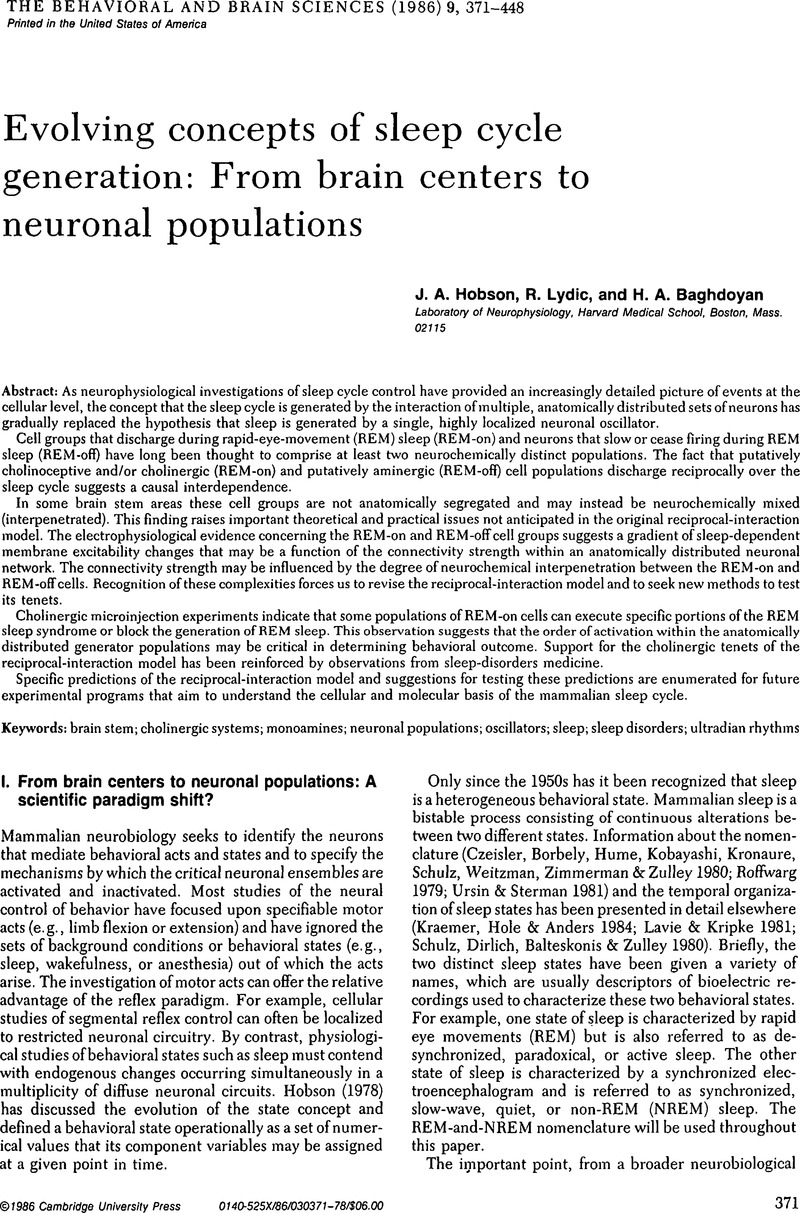Hobson, J. A. &
Steriade, M. (
1986) The neuronal basis of behavioral state control. In:
Handbook of physiology, Section I, “The Nervous System,” ed.
Mountcastle, V..
Intrinsic Regulatory Systems of the Brain.
American Physiological Society 4:
701–
823. [taJAH]
Google Scholar 